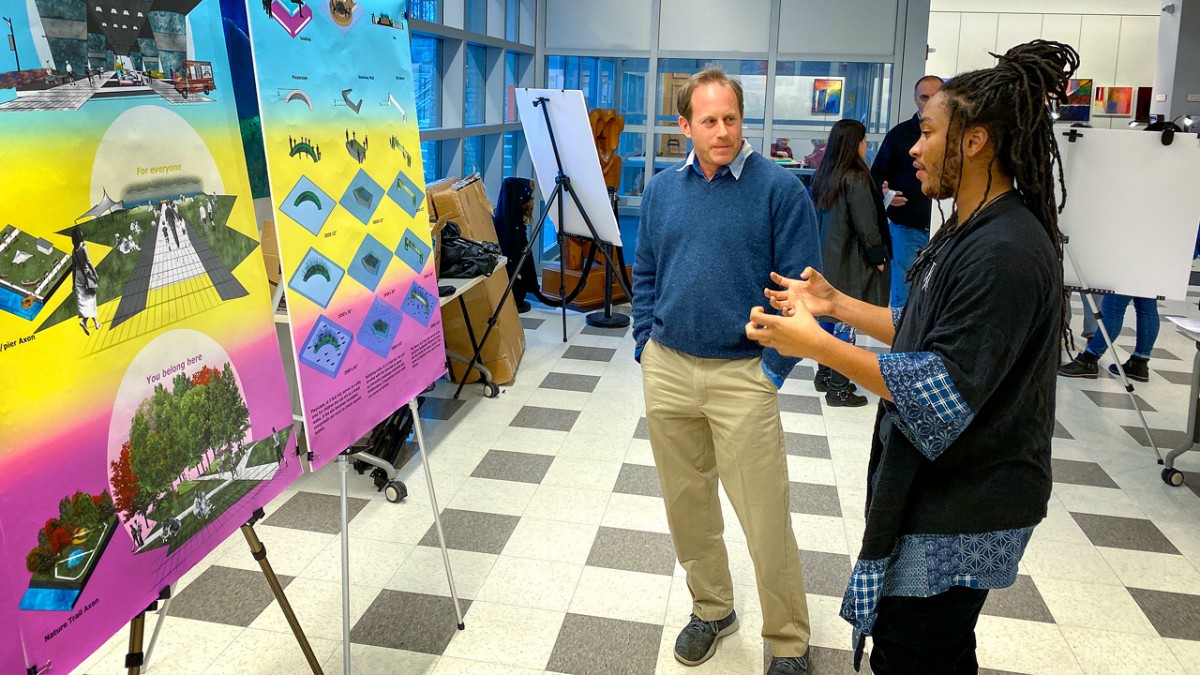Cornell University graduate students studying landscape architecture examined Ossining last fall, and in mid-December presented the town and village with ideas for climate-change adaptation. The student projects included marrying the built environment with marshy wetlands, plugging in more recreation, and working in tandem with natural and environmental systems.
In a report released two years ago, the New York State Department of Environmental Conservation (NYS-DEC) projected that the lower Hudson River could rise 2-10 inches by the late 2020s. That projection soars to 8-30 inches in the 2050s, and to as many as 58 inches – nearly five feet – by the 2080s. The water may rise to 75 inches higher, from the current base, at the turn of the next century.
Josh Cerra, associate professor in landscape architecture, teaches the climate-adaptive design studio course. Students taking the class have offered ideas for other Hudson River towns since 2015, when the studio started.
While no formal plans exist for Ossining’s future waterfront, the residents are discussing a collective action. The city of Kingston, New York, and the village of Piermont, New York – where Cerra’s previous classes presented their visions in earlier years – have begun working with the NYS-DEC and professional design firms in mid-2019 to develop projects – inspired in part by the students’ ideas – to boost waterfront resiliency.
For additional information, see this Cornell Chronicle story.
-30-
Original post https://alertarticles.info




